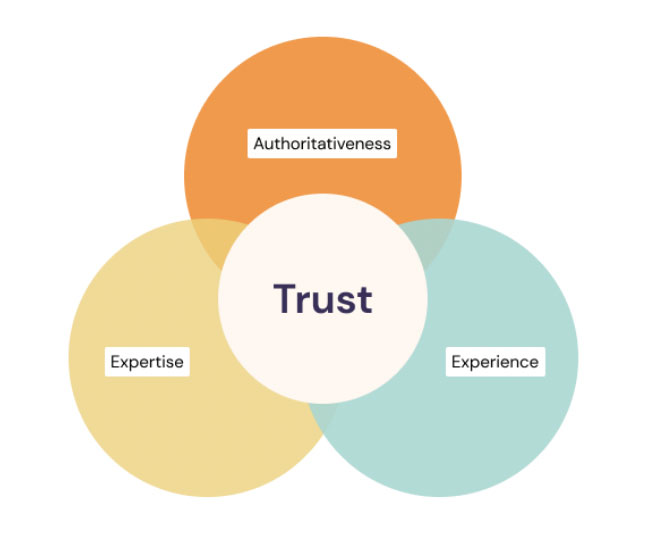SEO for Manufacturers & Industrial Companies: How to Succeed

When I look at manufacturing companies online, I see a lot of opportunities.
Most manufacturing businesses don’t have a strong digital marketing strategy and still rely heavily on sales.
SEO (search engine optimization) is a channel that is not well understood by most manufacturers and has a lot of potential.
In the last 4 years, I have helped a manufacturing company build its SEO from a 6 figure to a multi-million dollar channel.
In this article, I’ll share the key manufacturing SEO strategies that can help you do the same.
1. Knowing your audience
Knowing your target audience will be beneficial to all the following steps. This is not a one-off thing that you do and then you know. It’s an ongoing process.
In manufacturing, there are usually several people involved in big purchases and long sales cycles. To succeed, you have to get familiar with who you’re talking to and the sales process.
Here are five things you can do to know your potential customers:
- Create personas: The goal is to create a realistic representation of your audience that you can get back to as a reference.
- Talk to sales regularly: Join sales meetings and talk to the sales team member.
- Read messages from leads: Log regularly into your CRM and read the messages from leads. Notice the language they use, and visit their LinkedIn profile to learn more.
- Listen to sales calls: If you can, record the sales calls and listen to them.
- Meet clients in person: Although not absolutely necessary, you can learn a lot by meeting clients or potential clients in person.
2. Choosing the right keywords
Keyword research is a crucial step to success. It is a step many companies overlook and end up missing out on great opportunities.
An important concept to understand when choosing keywords is search intent: the user’s goal behind the query.
Understanding search intent helps you select and prioritize keywords as well as plan your content.
There are two primary ways I use to find keywords with the help of tools like Ahrefs or Semrush.
The first is by looking at all the keywords competitors rank for. The second is by starting with a seed term in the keyword tool.
In manufacturing, keywords will usually fall into one of two categories.
- Commercial keywords: Users looking for a specific product, service, or solution for a specific application. You can rank for these keywords with product and application pages.
- Educational keywords: Users looking for educational content related to their manufacturing processes. You can rank for these keywords with blog articles and sometimes a glossary.
Once you gathered your keywords, you’ll want to prioritize them in order of importance based on their relevance, your expertise, and their difficulty.
3. Writing content that ranks and converts
For most companies, I recommend starting with one article per week. Once you get the quality to a high level, you can go up to 2 or 3 per week if you want to accelerate things.
With that said, it’s best to produce one great article per week than 2-3 average articles.
Hiring a writer in-house produces better results, but you can also hire a freelance writer.
Because manufacturing content tends to be highly technical, you need a writer with great research skills and attention to detail. Take your time to choose someone, it can take some time to get it right and find the right person.
The higher you put the bar in terms of quality and unique expertise, the easier it will be to rank and convert more qualified leads.
Here are the four steps to follow for each article:
- Create a brief: A brief is a plan for the article including an article outline. It should result from an analysis of the search intent and the ranking competitors.
- Interview an expert: Ask internally who has the most expertise for your article subject. A 20-minute interview with this person should provide unique expertise to add to your outline. This person can be an application specialist, or an engineer on the R&D team.
- Technical review: Once the article has been written, your expert should review it to make sure it’s accurate.
- Add internal links: As you publish more content, you should add contextual links within your articles. Internal links that are beneficial for users will also be beneficial for SEO.
For more details on writing SEO-friendly content, you can read this article.
4. Building your business and author E-E-A-T
In their Search Quality Evaluator Guidelines, Google introduces the notion of E-E-A-T (Experience, Expertise, Authority, Trust).

Despite not being directly used in their algorithm, this is still an important concept that applies not only to your author(s), but to your company as an entity as well.
Without going into much detail about how it is used, here are a few actionable things you can do to improve your E-E-A-T.
Business E-E-A-T
- Get authoritative listings: Get your company listed on reputable manufacturing sites (like Thomasnet and IQS Directory) to establish credibility.
- Get customer reviews: Encourage clients to share their experiences on platforms like Google Maps.
- Get media coverage: Create newsworthy content and distribute press releases to catch the attention of journalists. Build relationships with journalists in your specific industry.
- Create a Wikipedia page: If your business qualifies, having a Wikipedia page or being listed as a source helps demonstrate authority and trustworthiness.
Author E-E-A-T
- Add author bios to your blog articles: Include a professional headshot, a bio of their background and accomplishments, and a link to their LinkedIn profile (and other social media profiles, if any).
- Publish on authoritative industry websites: Contributing articles with your author as a byline and bio on authoritative websites will be beneficial to your E-E-A-T.
5. Building great links
Backlinks are still an important part of SEO. For manufacturers, my approach is to go with quality over quantity and focus on the following four types of links.
Linkable assets
Linkable assets are high-quality pieces of content that attract links naturally. This is the best way to continually attract links naturally.
Here are the five types of linkable assets that tend to work well for manufacturers:
- Technical definitions
- How-to guides
- Technical papers
- Industry statistics
- Infographics
Article contributions
More commonly called guest posts, I prefer to call them article contributions. It sounds less spammy and tends to convert better when reaching out to editors.
There are tons of online magazines in the industrial and manufacturing sectors, and most of them accept quality article contributions.
Before sending the article, add a link to a helpful and relevant page on your site. Also provide them with your author’s name, headshot, bio, and LinkedIn link to help boost your E-E-A-T.
Specialized directories and associations
In most manufacturing industries, you’ll find quality directories and associations that you can sign up for.
Many of them have a yearly fee. Some of them might be too high for your budget, but keep in mind that you can negotiate the price in most cases.
Avoid the broad low-quality directories that don’t bring value to users. An example of a good directory is IQS Directory.
Press releases
Sending press releases is a great way to gain some citations and backlinks. I recommend using a service like PRWeb for distribution. Their “Advanced” plan allows you to pick an industry-curated journalist list for distribution.
You should also make a list of sites in your industry that publish news releases. These are usually the best since you’ll get a “follow” backlink.
Whether it’s a new technology, a new product, or a new location, make it newsworthy!
6. Refreshing your content
As you become better at publishing quality content and you innovate with new products and technology, there will be opportunities to refresh your content.
Manufacturing subjects tend to evolve at a slow pace. So a good rule of thumb is to update your content after 6 to 12 months.
A more advanced way is to look at the freshness distance and set the frequency based on the subject and your competitors.
Refreshing content can range from adding a new section to completely rewriting the article. The goal is to increase rankings, but better content will also result in better conversions.
7. On-page and technical SEO
The most important parts of your on-page are your title tag and your header tags. Make sure they are relevant, unique, and aligned with the user’s search intent.
In my opinion, a meta description is not really important. I had several clients succeed without writing a single one. Adding custom images with proper alt text is beneficial.
You should also spot opportunities for featured snippets and optimize for them.
Learning and implementing the best practices of site architecture is one of the most important technical things you can do.
An audit software like Ahrefs or Screaming Frog can help you with the most common technical issues and basic on-page optimization.
Keep in mind that no amount of on-page optimization and technical SEO will fix poor content quality, but it will propel high-quality content.
8. Expanding with multi-language
If you sell internationally, there are most-likely opportunities to expand with other languages.
Depending on your resources, it might be best to start by building your SEO on your main site before adding other languages.
Adding multiple versions of your website in different languages and for different countries can quickly become a headache.
Add one at a time. And get at least one person from the country you’re targeting to review your keywords and translate your content.
9. Tracking your SEO KPIs
With their long and often complex sales cycles, manufacturers need to track the entire funnel to gain valuable insights and drive real results.
Marketers should not stop at tracking Marketing Qualified Leads. It’s important to work closely with sales to identify opportunities and bottlenecks. You should also have shared goals.
Here are the KPI(s) you should be tracking:
- Keywords in top 3-10-50
- Domain Rating (DR)
- Referring Domains
- Organic traffic
- Marketing Qualified Leads
- Sales Qualified Leads
- Deals
- Sales
Lead generation and CRM software like Hubspot allow you to keep track of your leads.
Google Analytics for your traffic and Ahrefs for SEO-focused metrics.
10. Conversion rate optimization
Google wants users to have their needs met. For manufacturers, this often means a conversion. It’s a win-win situation.
To improve conversions, you need to make it easy for users to contact you with clear call-to-actions, contact forms, and phone numbers.
Ebooks are also great for manufacturing websites to capture users farther in the sales funnel.
Here are three things you can learn to help you improve your conversions:
- Copywriting: Learn from the best copywriting books (like Breakthrough Advertising) and apply the principles to your content.
- User experience: Learning the fundamentals of web design is crucial for conversion. I recommend the book Don’t Make Me Think as a timeless classic.
- A/B testing: A/B testing is the best way to test assumptions and continuously improve conversion. I recommend the book Making Websites Win as a starting point.
Conclusion
Most manufacturers don’t realize the potential of SEO yet. Even with the rise of AI, SEO will remain a profitable channel for authoritative websites.
If you would like to discuss SEO for your company, feel free to reach out or book a call with me.